 Randomini Tool
Randomini Tool
The Randomini tool allows randomization of selected artwork using an on-screen widget which is similar to that used by several other of Astute Graphics’ plugins, Stylism and Texturino.
Tool Location
After installing the plugin, the Randomini tool will show up in Illustrator’s main toolbar (which must be in Advanced mode: View > Toolbars > Advanced).
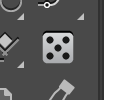
Randomino tool in the advanced toolbar
Randomini Tool Operation
When one or more art objects are selected and the Randomini tool is in use, its widget will appear, initially centered over the bounds of the selected art (it may later be repositioned; see below). By using the cursor to click or drag parts of the widget, the artwork can be edited. Except for Hue, all changes are previewed using outlines and are not actually applied to the art until the Apply button is clicked or the Enter key is pressed. Therefore, if you change your mind and decide not to randomize the art, simply switch to another tool and the art will remain as it was. All parameters are retained between uses of the tool. When not over a widget control, the cursor for the Randomini tool has the shape of a die showing various random faces. When nothing is selected, the Randomini tool can be dragged to marquee-select artwork.
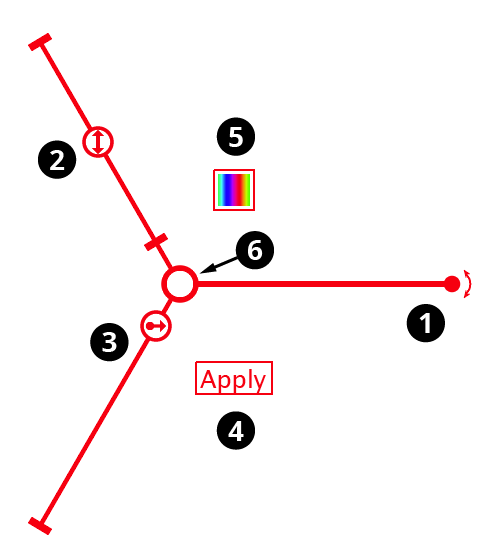
Randomino annotation widget
1. Rotation arm and control
Dragging the rotation control changes the angle up to which each piece of art will be randomly rotated around its bounding box center, in either a clockwise or counterclockwise direction. For example, setting the rotation arm at a 24° angle will cause the preview art to be rotated anywhere from -24° to 24°:
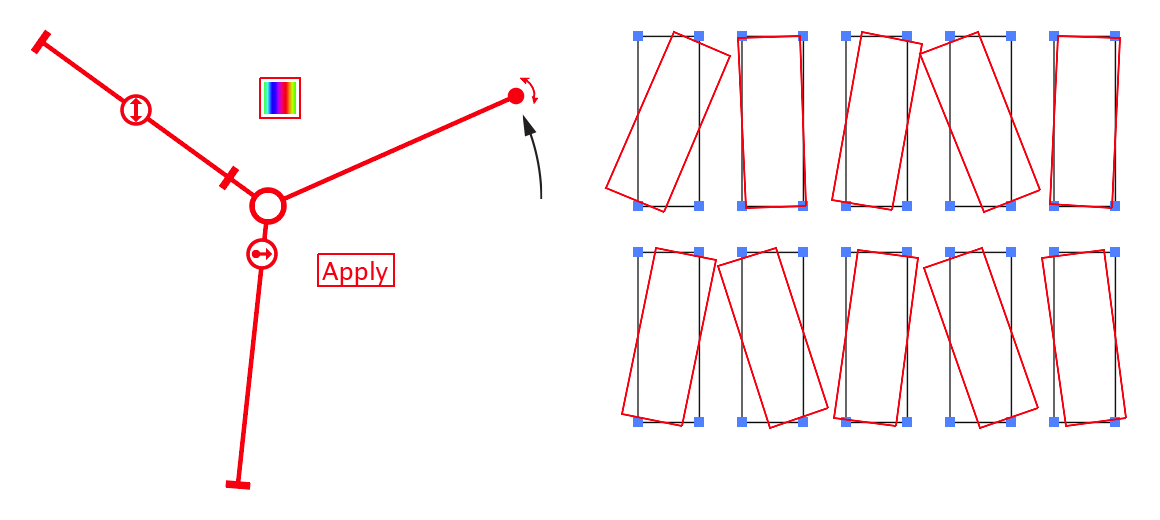
Randomino rotation arm preview
The rotation control may be double-clicked to set the rotation value numerically. Holding down the Shift key when dragging the control causes it to be constrained to steps of 10°. Holding down Command/Ctrl while dragging it enables “Slow-Drag,” which moves the control as if all cursor movements were reduced tenfold, allowing for fine-tuning.
2. Scale slider and thumb
Dragging the scale thumb changes the value up to which each piece of art will be randomly scaled from its bounding box center. For example, setting the scale value to 150% will cause the preview art to be scaled anywhere from 100% to 150%:
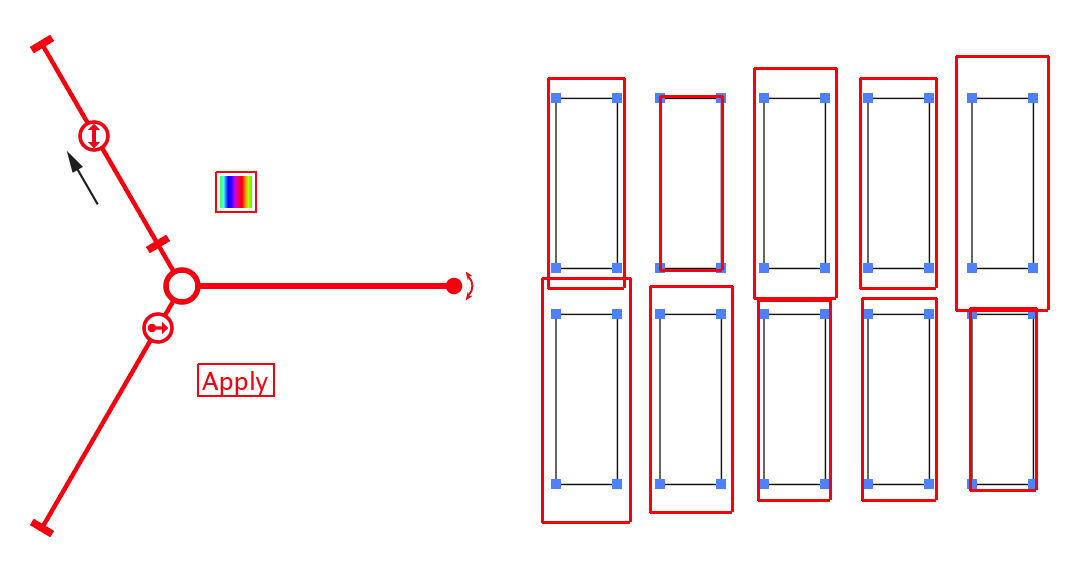
Randomini scaling control arm
The scale thumb may be double-clicked to set the scale value numerically. Holding down Shift while dragging the thumb causes the scale values to be constrained to integer values. Holding down Command/Ctrl enables “Slow-Drag”, as per the Rotation control.
3. Offset slider and thumb
Dragging the offset thumb changes the value up to which each piece of art will be randomly offset (shifted in position). For example, setting the offset value to 6pt will cause the preview art to be moved anywhere from 0 to 6 points. The offset direction is randomly chosen.
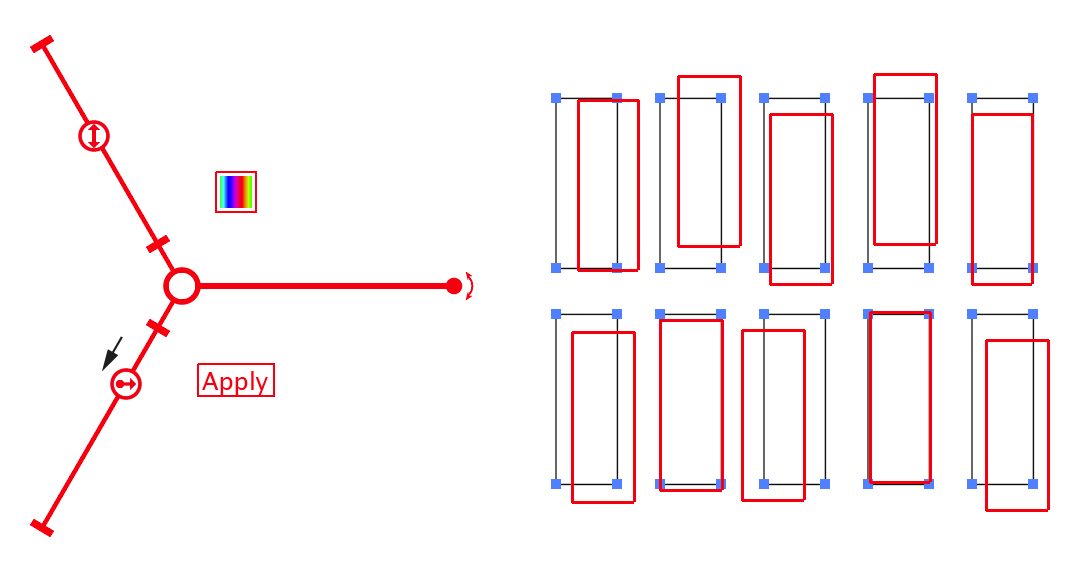
Randomini offset slider annotation
As with the scale thumb, the offset thumb may be doubleclicked to set the value numerically, Shift-dragged to constrain the value, or Command/Ctrl-dragged to enable “Slow-Drag.”
4. Apply button
Clicking the Apply button applies the currently displayed random rotation, scaling and offset to the selected art, as previewed. Immediately afterwards, since the art is still selected, new random parameters will be selected and previewed, allowing you to quickly apply multiple randomizations. To automatically deselect the art after applying the randomization, hold down Shift while clicking the Apply button. Pressing the Enter key has the same effect as clicking the Apply button unless no art is selected, in which case it opens the tool preferences dialog.
5. Hue button
Clicking the Hue button immediately randomizes the hues (strokes and fills) of the selected art. Note that black (which has zero brightness) and white (which has maximum brightness) are not affected by changing the hue. Also note that grouped objects are only affected if they have a stroke or fill applied in the Appearance panel at the group level, unless the “Ignore Grouping” preference is enabled (see Randomini: Preferences). Type objects are only affected if they have a stroke or fill applied in the Appearance panel above the Characters; to change the color of individual characters, use the Randomino panel.
6. Center control
The center control may be dragged to reposition the entire widget. Doubleclicking the center control resets all parameters to their default values (i.e., no rotation, no scaling, and no offset).
Randomini Preferences
Double-clicking the Randomini tool in the toolbox (or pressing the Enter key when nothing is selected) will bring up the Randomini preferences dialog:

Randomini Preferences
1. Annotation Color
Allows you to change the color of the widget along with the previewed art (default is red). When dragging with the tool, you may also change the annotation color on the fly by pressing the C key.
2. Ignore Grouping
Controls how grouped objects are treated. When this preference is enabled, grouped objects will be treated as if they were ungrouped:
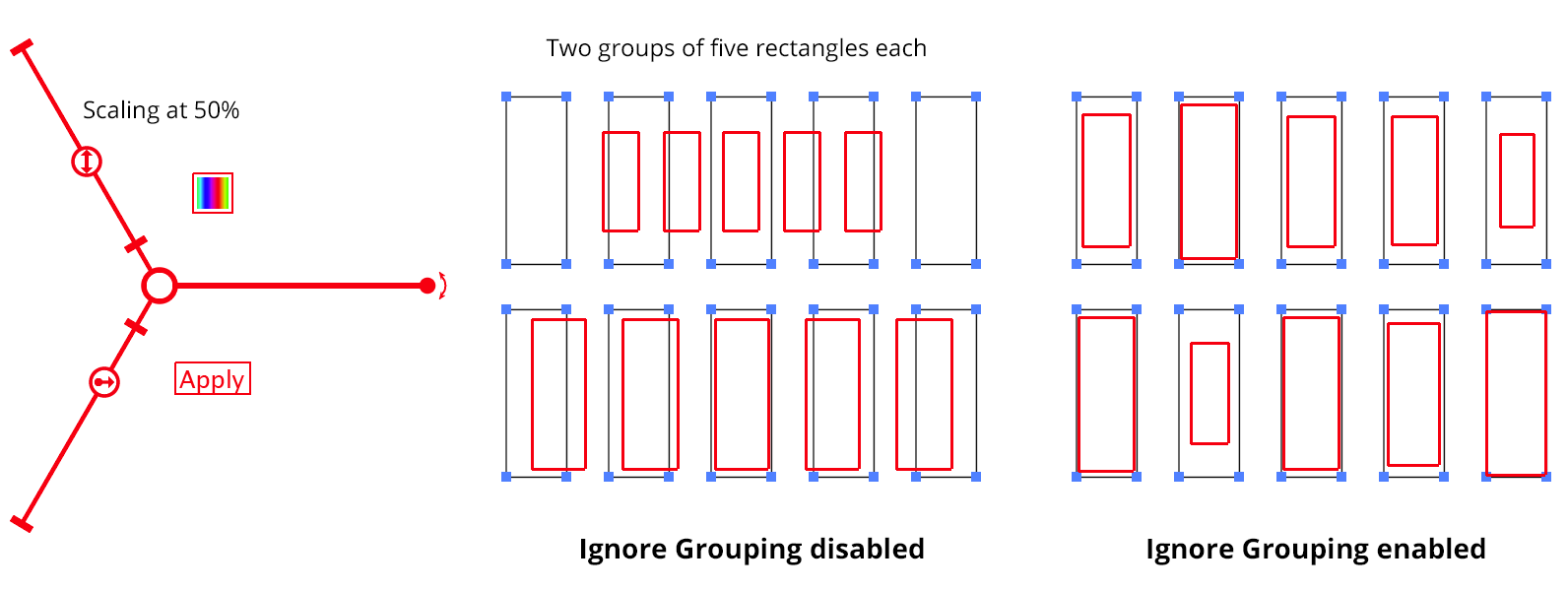
Randomini Ignore Grouping Preview
The Ignore Grouping preference may be toggled on the fly while dragging by pressing the G key.
3. Informational area
Shows a brief description of each preference setting when the cursor is being held over it.
4. Help Button
Opens the help documentation in the Astute Manager. If this does not automatically appear, please ensure your Astute Manager is running first.
